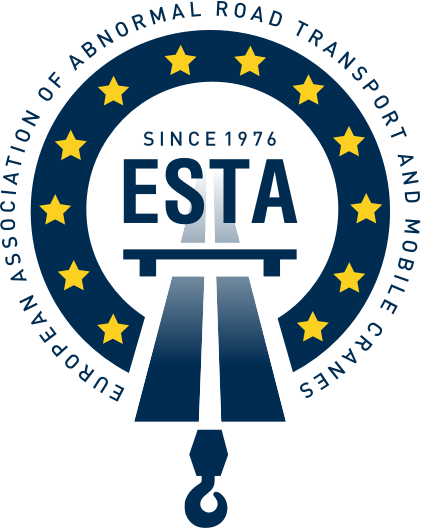
ESTA Section Transport Vice President Iffet Türken has launched an impassioned plea for the continent’s regulators, road authorities and heavy transport companies to work together to make the industry safer and more efficient.
Türken – a board member of trailer manufacturer Kässbohrer – was speaking in Amsterdam at the recent World Crane and Transport Summit. She told the 150-strong audience of senior industry executives that the needs of exceptional transport in Europe are too often ignored both by national governments and the authorities in Brussels.
“Exceptional transport in Europe is largely ‘in the dark’ but everyone involved with the industry should realise that all costs incurred in unnecessary red tape raise the price of European products on world markets,” she said
Türken continued: “ESTA would be delighted to provide a platform for regulators and transport authorities to come together and explore best practice and how they can work together for the benefit of all.
“But above all, we need our national authorities to talk to each other and commit themselves to the development of best practice. “
To ESTA’s considerable frustration, many of its concerns would – in theory at least – be easy and cheap to rectify, but it appears that the necessary changes do not happen because the heavy transport and abnormal load sector does not have the lobbying clout of some other industries.
One example is the proposal to harmonize the marking and lighting regulations for abnormal loads across Europe.
ESTA set up a cross-industry working group led by Türken and Section Transport President André Friderici of Switzerland-based Friderici Spécial to study the different regulations in operation around Europe and produce its own recommendations.
That report was published earlier this year and is now being presented to relevant orgaisations in an attempt to garner their support.
Türken told the Amsterdam conference: “The current situation is absolutely ridiculous. The rules for marking and lighting of abnormal transports are different in every EU country.
“This is perhaps not the most important topic, but a recurring and costly nuisance. Why does everyone want their own signs? And why is a side marking board in one country 50 x 50 cm and in another country 42,5 x 42,5 cm?
“ESTA is trying to get some unity here and we have produced a report with proposals for amendment of the current ECE R48 regulations.”
Türken also reeled off a list of other issues that are hampering the European industry, reducing efficiency and safety.
“Rest time regulations are often impossible to adhere to because of non –alignment with permitted driving periods and an absolute lack of suitable parking places for exceptional transports on the routes we are forced to take.
“What is more, every nation tries to develop their own systems and there is no ‘best practice’ culture among civil servants. For example, we have a few countries in Europe that have a well-designed and functioning electronic permitting system. There are good examples in Sweden and Holland.
“But every country wishing to introduce electronic permitting tries to re-invent the wheel. The result is a waste of money and time and results in sub-optimal systems being developed that all have different standards.”
